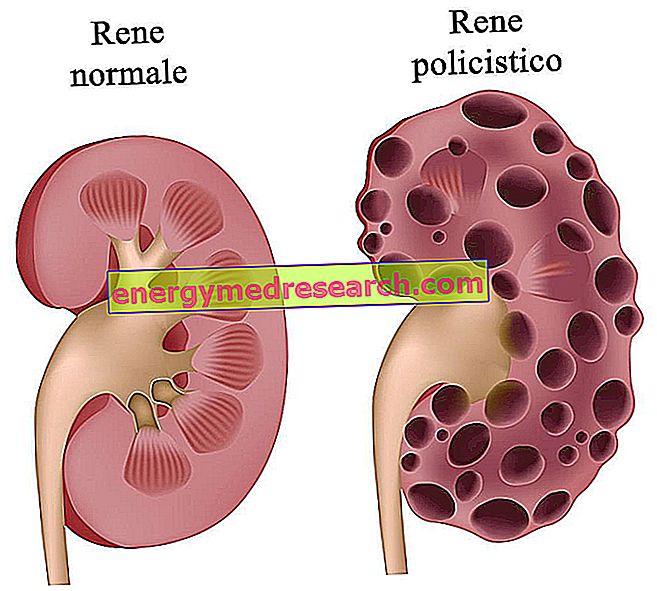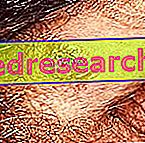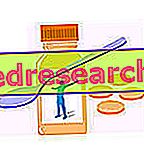Definition
We speak of hypogonadism when the female or male gonads (ovary or testicles) do not secrete adequate or sufficient amounts of sex hormones, such as estrogen and testosterone; the hypogonadotropic variant is a rare and severe form of genetically transmitted hypogonadism.
Hypogonadism is classified into two forms:
- Primary: ovaries and testicles do not properly perform their endocrine function
- Secondary: a malfunction of the hypothalamus and pituitary gland is observed, the brain centers that control the gonads
Causes
Primary hypogonadism: the malfunction of testicles and ovaries can result from liver diseases, bacterial infections, autoimmune diseases, genetic diseases, orchitis, renal pathologies, radio / chemotherapy, Turner syndrome (in females), Klinefelter syndrome (in males).
Secondary hypogonadism: excessive intake of steroids / opiates, vitamin / nutritional deficiencies, hemochromatosis, hemorrhages, HIV infections, obesity, trauma, sarcoidosis, Kallmann's syndrome (in the male), tumors of the pituitary gland (hypophysis)
Symptoms
All forms of hypogonadism are accompanied by symptoms such as fatigue and difficulty concentrating; the other characteristic signs depend on the moment in which the disease begins:
- Fetal hypogonadism → impaired development of sexual organs, difficulty recognizing the sex of the child
- Puberal hypogonadism → non-appearance of menstruation (in the female), lack of hair growth on the body (in the male), failure to change the timbre of voice (in the male), poor development of muscle mass, incomplete development of the sexual organs
- Hypogonadism of adulthood → decline in sexual desire, erectile dysfunction, gynecomastia, osteoporosis, flushing
Information on Hypogonadism - Drugs for the Treatment of Hypogonadism is not intended to replace the direct relationship between health professional and patient. Always consult your doctor and / or specialist before taking Hypogonadism - Hypogonadal Drugs.
drugs
Despite being quite severe, many variants of hypogonadism are treatable and present a good prognosis.
Numerous patients suffering from hypogonadism, both men and women, undergo a hormonal replacement drug treatment, in which estrogens can be taken transdermally or orally, and testosterone administered via patch, injection, gel. Even children with hypogonadism can be treated with a specific and personalized HRT: in the hypogonadal male, for example, drug treatment aims to increase muscle mass, promote the development of beard and hair, and stimulate testicular growth and penis.
Women suffering from hypogonadism, previously subjected to surgical removal of the uterus, can take combined pills with estrogen and progesterone, in order to minimize the risk of endometrial cancer.
Testosterone (administered at low dosages) can also be taken by women with hypogonadism to ignite or stimulate sexual desire which, as analyzed above, is rather weak or otherwise altered by the disorder.
Males suffering from hypogonadism can undergo pharmacological injections formulated with pituitary hormones, which are useful for promoting sperm production.
The oral administration of testosterone for the treatment of hypogonadism is not recommended in the long term: a similar therapy, in fact, can increase the risk of heart disease, increase the level of bad cholesterol in the blood and cause liver diseases.
Testosterone hormone replacement therapy for the treatment of hypogonadism
Testosterone undecanoate (eg. Testovis, Nebid, Androgel, Striant, Testogel, Androderm, Testoviron): testosterone is used in sexual dysfunctions related to hypogonadism (eg impotence, hypo-sexuality, decreased sexual desire, andropause in general), as well as for osteoporosis control. Testosterone can be applied topically with gel or patches, injected intramuscularly, implanted under the skin or taken in the vestibular way:
- Injectable formulation (to be taken parenterally): formulated as a short-acting drug, it is recommended to take 25-50 mg of active ingredient intramuscularly 2-3 times a week. Formulated as a long-acting product, it is recommended to administer testosterone at a dose of 50-400 mg, via IM, every 2-4 weeks.
- In the form of slow-release transdermal patches: apply a formulated patch with 2.5-5 mg of drug directly on the back, on the abdomen or on the upper part of the arm, once a day (preferably in the evening).
- In the form of a 5 gram gel (with 50 mg testosterone): apply the product in the morning after cleansing and carefully drying the skin of the shoulders, arms, abdomen. If necessary, increase the dose up to a maximum of 10 grams per day.
- Subcutaneous implant (eg Testopel): insert 2-6 pellets (each formulated with 75 mg of drug) subcutaneously, every 3-6 months.
- Vestibular testosterone administration: apply a Striant (a sort of pasty substance formulated with the drug) on an incisor tooth, twice a day (morning and evening). The product, in contact with saliva, softens to form a sort of gel: in this way, testosterone can be absorbed by the bloodstream (the drug is conveyed through the mucosa of the gum). Consult your doctor for more information.
Chorionic gonadotropin (eg Gonase): a drug used in the context of female hypogonadism in women with failed ovulation; therefore, the administration of this active ingredient favors the release of the oocyte (egg cell) from the ovaries. Even the man suffering from hypogonadism - especially in cases of infertility, azoospermia and oligoastenospermia - can take this drug. Gonase is available as a powder + solvent for solution for injection, at doses ranging from 125 to 10, 000 IU: the dosage and duration of therapy are parameters of exclusively medical competence. As an indication, the dosage for the treatment of hypogonadotropic hypogonadism varies, on average, from 500 to 1000 IU, to be taken intramuscularly three times a week; after the first three weeks of therapy, proceed with the same dosage, twice a week for 21 days.
Follitropin Beta (eg. Puregon, Fertavid): the drug is an analogue of the hormone FSH, implicated in the complex regulation of reproductive activity. It is recommended for both female hypogonadism (to stimulate egg synthesis) and the male variant (to promote sperm production). The drug is administered by subcutaneous or intramuscular injection. The dosage depends on the severity of the condition, the sex and the patient's response to treatment. The drug is also indicated for the treatment of hypogonadotropic hypogonadism.
Follitropin alfa (eg Gonal-F): in the injectable form, the drug is used in therapy for the treatment of female hypogonadism - especially if associated with complete amenorrhea - and to favor sperm synthesis in men suffering from male hypogonadism. The specific posology to stimulate sperm synthesis in male patients with hypogonadism should be customized for each patient; however, for purely indicative purposes, the dosage can vary from 150 IU by subcutaneous injection to be repeated 3 times a week, up to 300 units, to be taken three times a week. Also this drug, like the previous one, is used in therapy also for the treatment of hypogonadotropic hypogonadism.



